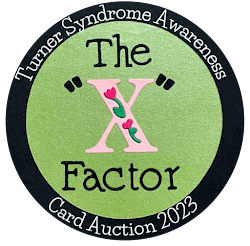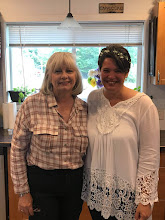Good morning! Today, I am sharing my projects that I am submitting for my fourth AECP Level 1 course - Easy Ink Blending Techniques. I really enjoyed this class, as several of the techniques were completely unfamiliar to me and forced me to really stretch myself. It also allowed me to use some items that I have had on hand, but not had time to play with.
My journey through this course really evolved quite a bit from where I initially started. I was familiar with, but by no means proficient at basic ink-blending on card stock using ink and an ink-blending tool. In fact, I had just used that technique on the project that I submitted for All About Layering 2, so I wanted to use a different technique for this course. I decided to focus on the technique in Lessons 4 and 5 - Emboss Resist and Faux Watercoloring. I have used the Emboss Resist Technique many times, but paired with the Faux Watercoloring Technique was something entirely new to me and I love the results!
One thing that I had never done was to create color swatches to see the effects of different card stocks on ink colors. This provides an extremely helpful visual aid in determining what paper and what colors to use, as the variation in colors between papers can be drastic.
For this part of the process, I used Neenah 80# White Card Stock, which has a relatively smooth finish and Oat Art Studios 300g/140# Hot Pressed Watercolor Paper. To begin with, the watercolor paper has an ivory tone to it, where the Neenah card stock is truly white. As you can see in the photos, the Pink Pearl ink has a more peachy tone on the watercolor paper, and the Dew Drops ink is much more green,
I had just received a package of goodies from Altenew that included a bunch of the mini stamp sets that I had ordered when they were on sale, and I was itching to use the Inked Bud stamp set, so I decided to try the Faux Watercolor Technique with it. Because the main image is so small, I thought I could try making some 3” x 3” mini notecards. I also used the Lavender Bud mini stamp set, which didn’t have any detailed image to add additional color to, but I thought it was beautiful with the “watercolor” background.
Here are some close-up images of the individual mini notecards.
Ok, on to the card that I feel really highlights this amazing technique. Because I am enjoying this technique, I wanted to make an A2 sized card with a larger stamp that includes more detail. It took a few attempts for me to get the results that I wanted, mostly because I didn’t care for the way some of the colors blended when I added them.
I started with a 4.25” x 5.5” piece of watercolor paper. I heat-embossed the larger floral image from Altenew’s Vintage Garden stamp set in white . I began laying down my colors using my ink-blending tool until I was satisfied with the color, and then I wet my watercolor paper with water using a spritzer. For my colors, I used Altenew Crisp Dye Ink in Pinkalicious, Dew Drops, and Bamboo.
While the paper was still wet, using a wet paintbrush, I added more of the same colors to the image to add some depth to the image. Once my panel was dry, I added more color using Distress Inks and a wet brush. To complete my panel, I picked up some of the Distress Ink colors on my paint brush and splattered them randomly.
To assemble my card, I trimmed my panel down to 4” x 5.25” and I die-cut “Congrats” from the Altenew Signature Words Dies on black card stock and I heat embossed one of the sentiments from the Altenew Beauty Within stamp set in white on black card stock. I trimmed the black card stock down and I adhered it to my card panel using Bearly Art Precision Craft Glue followed by the die-cut “Congrats.”
I then glued down the panel to my card base and placed some acrylic blocks on top of it to allow it to dry flat. Once my card was dried, I added a few iridescent rhinestones to give it some sparkle and dimension.
Key Learnings;
- Taking the time to create swatches really helped me make a decision on what colors to use, based on how the paper affected the color.
- Watercolor paper is two-sided - one side tends to be very toothy (and is difficult to get a clean stamped image for me) and one side is less textured. I don’t know how I hadn’t realized this, but it was a game changer for me!
- I loved Amy’s method of storing her blending foams on the bottom of the ink pads. This was so helpful for me, as hadn’t been able to figure out how to store them and keep track of which ink color they matched. Brilliant!
- Google is my friend. OK, this really has nothing to do with the card-making process, but about blogging. I wanted to add 3 small aligned images, and there is no easy way to do that on Blogger. I got my first dive into using the HTML Editor and code, and I am pretty proud of myself!
- If at first you don’t succeed, keep trying. You will get there!
Products Used;
- Recollections 110# White Card Stock
- Neenah 80# White Card Stock
- Recollections 65# Black Card Stock
- Arches 300g/140# Cold Pressed Watercolor Paper
- Oat Art Studios 300g/140# Hot Pressed Watercolor Paper
- Altenew Vintage Garden Stamp Set
- Altenew Inked Bud Stamp Set
- Altenew Lavender Bud Stamp Set
- Altenew Crisp Dye Ink: Lavender Fields, Bamboo, Sunny, Pinkalicious, Dew Drops
- Tim Holtz Distress Ink: Mustard Seed, Spiced Marmalade, Mowed Lawn, Picked Raspberry, Peacock Feathers
- Versamark Watermark Ink Pad
- Memento Tuxedo Black Ink PadBearly Art Precision Craft Glue
- Recollections Irridescent Rhinestones
- Stampin’ Up Sequins
As always, thanks for stopping by! Please don’t forget to follow me to stay up-to-date on my journey in the Altenew Educator Certification Program. I hope that something I shared sparked your creativity!


























Super fab work Kim! Such happy and colourful projects!
ReplyDeleteThank you for submitting your wonderful work to the AECP assignment gallery.